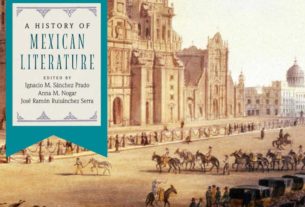Anglo-Canadian literature begins with travel writings by two Englishmen and precisely with Account of a Journey from the Hudson Bay to the North-West (1795; Narration of a journey from Hudson Bay to the North-West) by Samuel Hearne and with Voyages from Montreal through the Continent of North America (1801; Journeys from Montreal across the continent of North America) by sir Alexander Mackenzie. Other travel writings are due to the historian George Heriot (1807), to Alexander Henry (1809) and to A. Brownell Jameson (1838). The historical works show, with references to geography and the natural environment, the events of the English colonization in contrast with the French one. A new literature, with ethnographic motifs and local linguistic elements, arises with Archibald Lampman (1861-1914), William Erik Drummond (Irish by birth) and others, singing about the life of the pioneers and the wonderful spectacle of nature. For the theater we remember a Saul (1857), a dramatic poem by Charles Heavysege. In opera there are imitators of Swinburne and Tennyson. Among the narrators we note the tendency towards the historical novel and the study of local traditions. It is notable Wacousta (1832) by John Richardson, author of The War of 1812. Romantic descriptions of villages and forests are found throughout the century. XIX. The twentieth century sees in the first decades only a flowering of popular fiction and poetry, with no names that deserve particular mention. A certain awakening can be seen after the First World War: in the group of American expatriates in Paris there is a place for the Canadian Morley Callagham, author of short stories and of a remarkable autobiography with environmental notations; Mazo de la Roche deserves a place in itself for its narrative effectiveness and artistic dignity (1885-1961), the most popular author between the two wars and also appreciated outside the borders of Canada. After the Second World War, according to cheeroutdoor, Canada expressed notable voices. Saul Bellow was born there in Québec (1915), one of the greatest contemporary writers, who later moved to the United States. Canadian was Northrop Frye (1912-1991), one of the most significant literary and theoretical critics of aesthetics of recent decades, as was the mass media scholar and literary critic Marshall McLuhan (1911-80). Among the most interesting exponents of the last generations there are: Leonard Cohen (b. 1934), poet, folk-singer, novelist; Margaret Atwood (b. 1939), which rose to prominence also in Italy for The Edible Woman (1969; La donna edible), a resentful yet ironic analysis of the female condition; Mordecai Richler (1931-2001), author of satirical and humorous novels in which he addresses the problems of the contemporary Canadian Jew (Barney’s Version, 1997, Barney’s Version); Robertson Davies (1913-1995) (The Cunning Man, 1996); and also Robert Kroetsch (b.1927), Jack Hodgins (b.1938), Timothy Findley (1930-2002) and Matt Cohen (1942-1999). The early 1990s saw active authors of poetry such as the English speakers Phyllis Webb (b.1927), Jan Conn, S. Scobie (b.1943; his irreverent Ghosts and the meticulous A Glossary of the Intertext, both from 1991) and A. Purdy (1918-2000), ingenious and ironic (The Woman on the Shore, 1991), the latter two also measured with prose, as did Linda Rogers (b.1944)), with Woman at Mile Zero (1992). The English-language novelists, for their part, have proved themselves in the most disparate genres, in the humorous thriller like G. Bowering, born in 1935 (Harry’s Fragments. A Novel of International Puzzlement, 1991), in the saga like H. Hood (1928-2000) author of Property and Value, 1992, eighth of a series of volumes dedicated to the events of a Canadian family; in the historical detective story as Margaret Doody (b. 1939) with her series of investigations carried out by Aristotle) or in the socio-psychological portrait as A. Munro (b. 1931), with Friend of my youth, 1990; The Love of a Good Woman, 1998 from 2004 is Runaway: Stories, which, curiously, has, in the Italian version, the same title as a 1996 work by Ann Michaels (b.1958), Fugitive Pieces. For Canadian authors, the link with the land is always crucial but ethical values are also important, the only ones capable of transcending geographical boundaries and making literature understandable to all. These concepts can be found, for example, in the works of Michael Ondaatje (b.1943): from the lines with which he made his debut up to the novels of the nineties, from The English Patient winner of the Booker Prize and from which the homonymous and famous film, up to the experimental The Complete Works of Billy the Kid. The memory of one’s past, of one’s roots, becomes the central theme in the various and diversified representations of reality, not only among the ranks of immigrant writers such as the Afro-Canadian Austin Clarke (b. 1934), André Alexis (b. 1957); the Scots and Irish A. Mac Leod (b. 1936), author of numerous collections of short stories and a novel, J. Urquhart (b. 1947), author of The Whirlpool, 1986; Away, 1993; A Map of Glass, 2005; the Italian-Canadian N. Ricci, born in 1959 (Where she has gone, 1998, the last of an autobiographical trilogy), but also in native Indian authors such as Basil Johnston (b.1929), JB Joe, R. Mistry (n. 1952), author of A fine balance, 1997; or in the last work of G. Vanderhaeghe (b. 1951), The Englishman’s Boy, 1997. A special place deserves the young eclectic Canadian writer D. Coupland, n. 1961 (Generation X, 1991; Polaroid from the Dead, 1996; Girlfriend in Coma, 1998; Lara’s Book, 1999), who experimented with portraits and sketches of modern North American society with strong colors. In 2006 he published JPOD, an ironic critique of technology and consumerism of the third millennium. Many of these themes are also addressed by the postmodernist poets, J. Deahl, G. Bowering, R. Kroetsch, R. Bringhurst. The long narrative poem it continues to be the indigenous form of poetic expression: confirmation also comes from a work by D. Brand, a poet committed to racial and feminist issues (Land to Light on, 1997). At the turn of the third millennium there are also other authors of lyrics, whose themes range from linguistic experimentation to the female condition, from historical re-enactment to the constant redefinition of one’s own ethnic identity: among the most significant voices Karen Solie (Short Haul Engine, 2001; Modern and Normal, 2005) Don McKay (Field Marks, 2006), Sharon Thesen (A Pair of Scissors, 2001), Erin Mouré (Little Theaters; or, Aturuxos Calados, 2005). Since the end of the Nineties, therefore, there have been several innovations regarding the contents: nature, which has always been the inspiring muse of many artists, leaves room for new problems of a now cosmopolitan, urbanized and post-industrial society, where the relationship with the other and the external environment is a changing becoming of space and time. Among the new names, which join the successful Canadian writers, we can mention: Barbara Gowdy, Gail Anderson Dargatz, Leilah Nadir, Anosh Irani (b. 1974) and Isabel Huggan. A mention deserves Naomi Klein (b.1970), whose essay on the economic power of multinationals and on the repercussions in terms of global inequalities, No Logo, became a manifesto of the anti-globalization movement and enjoyed international success.


